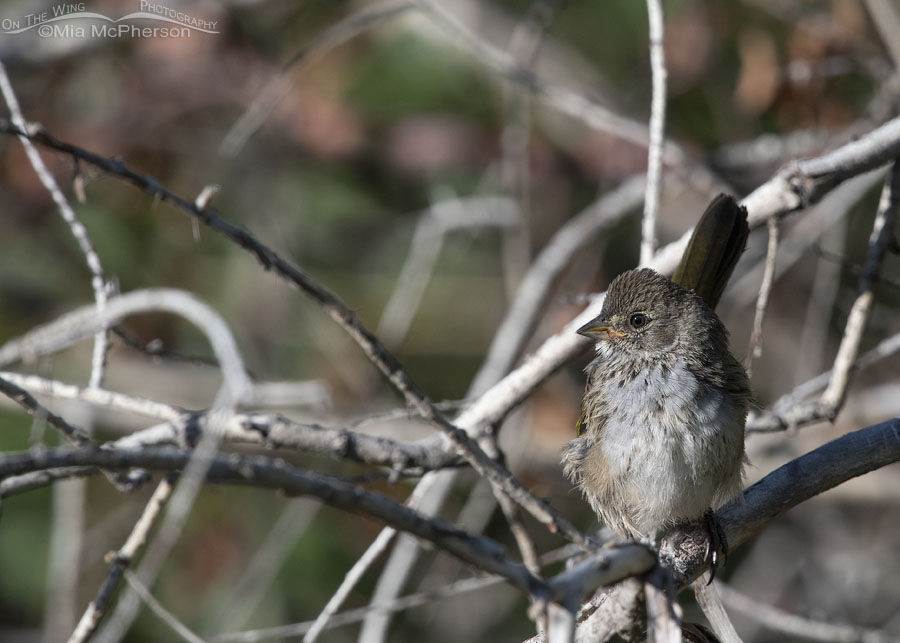
Juvenile Green-tailed Towhee in a willow thicket
Some of my first juvenile Green-tailed Towhee photos of the year were taken towards the end of July and even though some were taken in busy settings I kept them because I thought about doing a bird ID quiz with the photo above.
With this limited view of the young bird I know that it might be challenging to ID for some people especially since this species is found mostly in the western U.S. and during the winter in the southern most parts of the U.S. and in Mexico.
These two additional photos of the same bird might give more clues as to the identity if this young bird. The green on the wings and tail points to the ID of Green-tailed Towhee. This young Green-tailed Towhee lacks the rufous cap that the adults have.
Recently I saw a young Green-tailed Towhee photo listed as immature/female and that made me scratch my head.
So I decided to set aside the idea of doing a bird ID quiz with these photos. More on that soon. To be clear, all of the photos I am sharing today are Green-tailed Towhees.
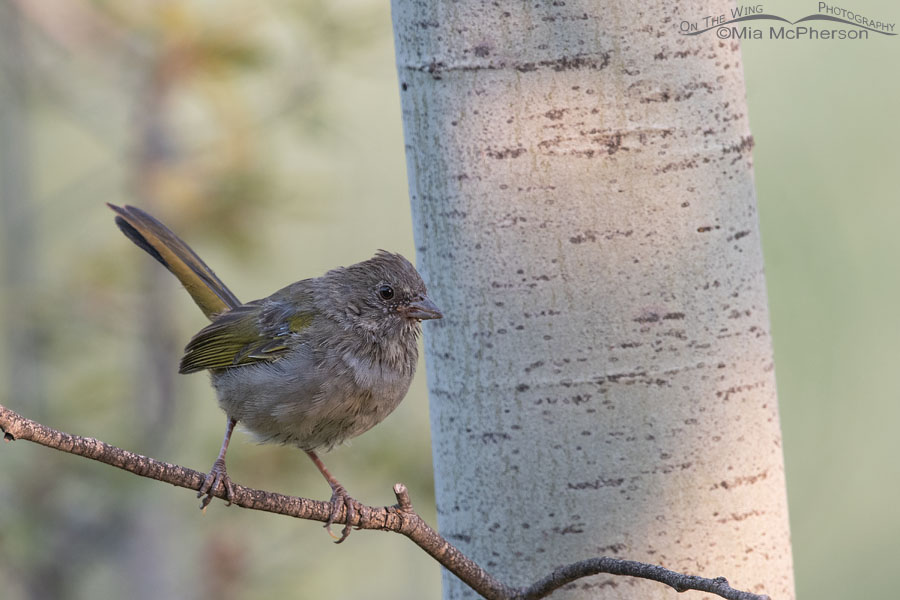
Immature Green-tailed Towhee in a stand of aspens
The immature Green-tailed Towhee in the photos above was photographed in August of 2018, it also lacks the rufous cap that adults have but the green tail and wings are clearly visible.
I would label this towhee as immature or young but I wouldn’t even attempt to guess or label its gender.
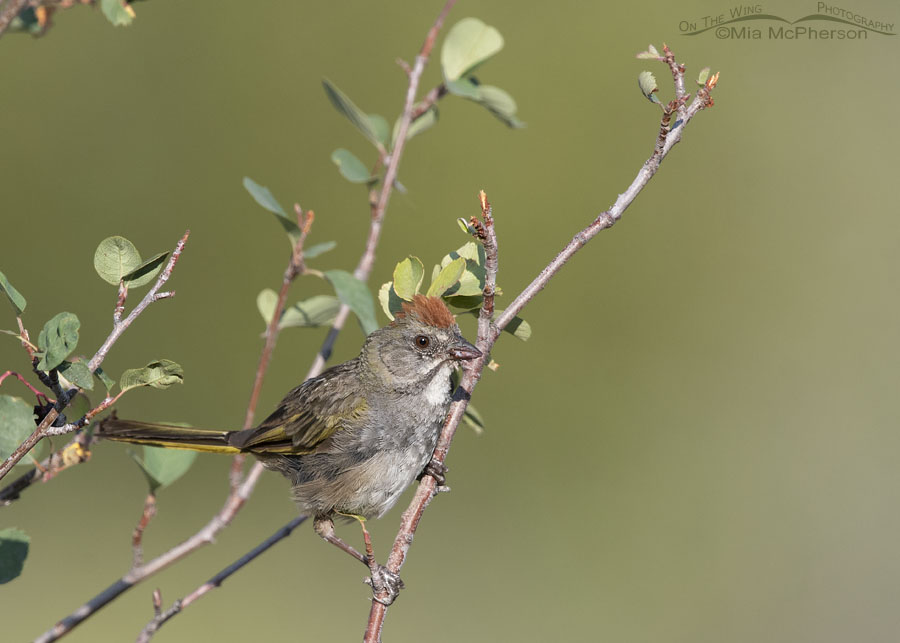
Green-tailed Towhee adult foraging in a serviceberry bush
Yesterday thanks to my hearing and eyesight combined I was able to photograph this adult Green-tailed Towhee because I heard calls in a sagebrush and then the towhee flew into a serviceberry where it foraged.
I would not assign a gender for this adult towhee. In fact I wouldn’t feel comfortable attempting to assign one given the time of year.
You may wonder where I am going with this, I promise, I am getting there.
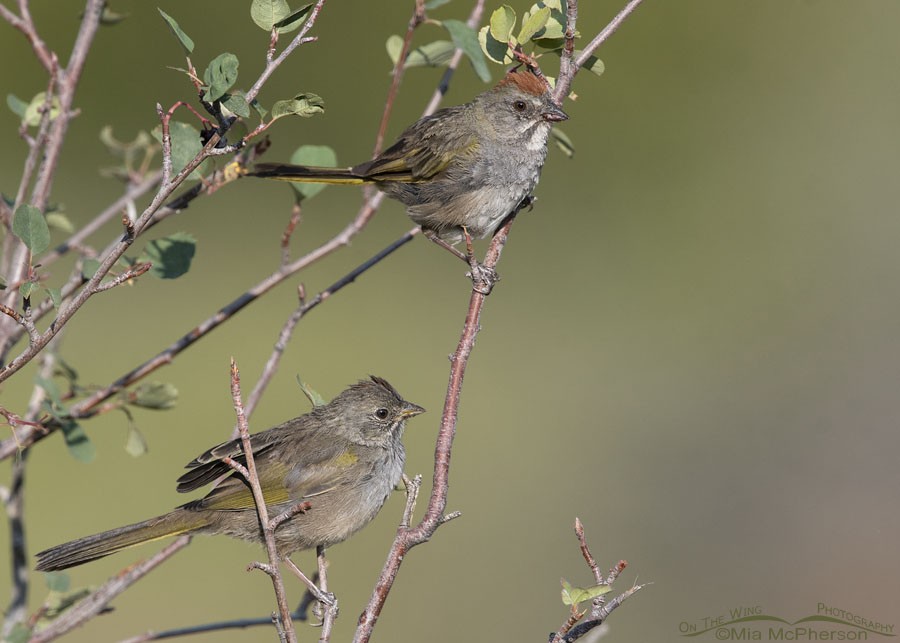
Adult and immature Green-tailed Towhees in a serviceberry
When I first heard and saw the Green-tailed Towhee in the photo above I knew it was not alone, I also saw a young towhee flying after it and I watched it land in the brush below the serviceberry. I hoped it would also make an appearance and it did. It perched in the serviceberry below the adult.
In this photo we can clearly see the differences between adult and immature Green-tailed Towhees.
At this point I know a lot of people might be tempted to call this adult Green-tailed Towhee a female but I’m not going to do that.
Why?
Because male and female Green-tailed Towhees are sexually monochromatic which basically means they look alike. There can be some minor differences in appearance including females having slightly duller plumage and crowns. Sometimes those differences are indistinguishable from adult males and thus are unreliable, probably more so when their feathers are worn.
Additionally, Green-tailed Towhees adult males and females feed their young in the nest and after they fledge. It isn’t just the females that tend to their young in this species.
So labeling this adult Green-tailed Towhee a “female” just because it was in the presence of its young… well, that seems kind of sexist to me. So I just called it an adult.
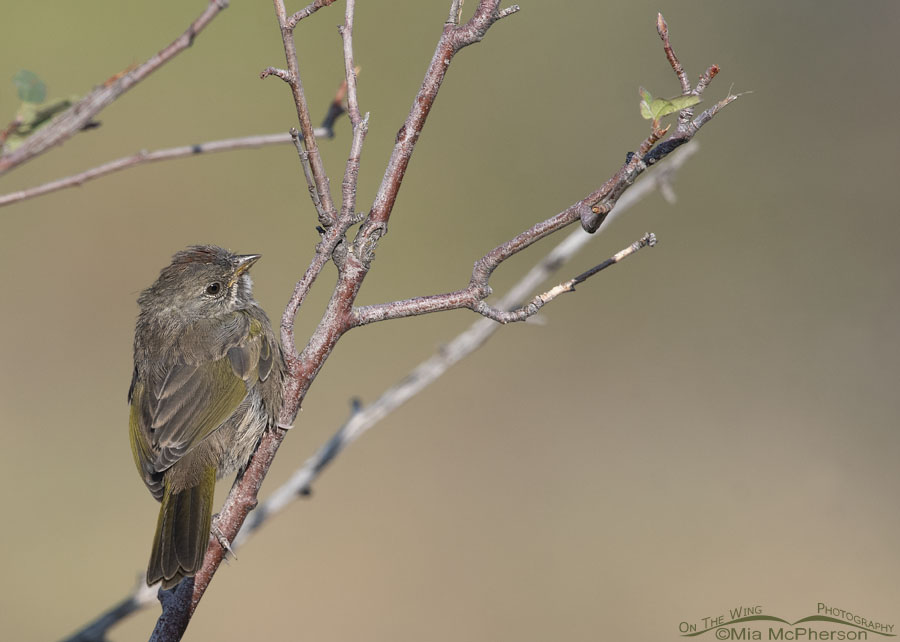
Young Green-tailed Towhee perched on the bare branches of a serviceberry
Back to the “immature/female”.
In some birds, for instance Wilson’s Warblers, the females and young of the year can and do look similar and it can be challenging to tell them apart. Sometimes that can only be decided when a bird is in hand during banding. Or if you are an expert like Peter Pyle.
But the immature Green-tailed Towhees are distinguishable from the adults so if the label immature/female is meant as immature/adult female, it would be incorrect.
It might be best to just label the young bird as immature or juvenile if it is clearly still in juvenal plumage? That is what I do.
Or immature/?male?female?
Nah, that is too complicated for me.
I’m going to throw out another curve ball.
Remember the Green-tailed Towhee in the photo with the immature bird below it that I called an adult?
Well there is a time of the year when the gender of the males can be distinguished. That is when the males are singing on territory. Female Green-tailed Towhees call but they don’t sing so earlier in the season if a Green-tailed Towhee was singing I can pretty much be sure that the bird was a male and I’ll label them as adult males. All of the photos in the gallery above and the one below are a single, singing male.
But if I came across a silent adult during their breeding season? I’d label it an adult. Green-tailed Towhee males sing often but they don’t sing all day long.
After nesting and raising their young male Green-tailed Towhees stop singing. So if I see an adult now… I just call it an adult because I simply can’t tell which gender they are during this time of the year from casual observations or from photos.
So when I see adult Green-tailed Towhee photos taken after they stop singing labeled as “males” that makes me scratch my head as well.
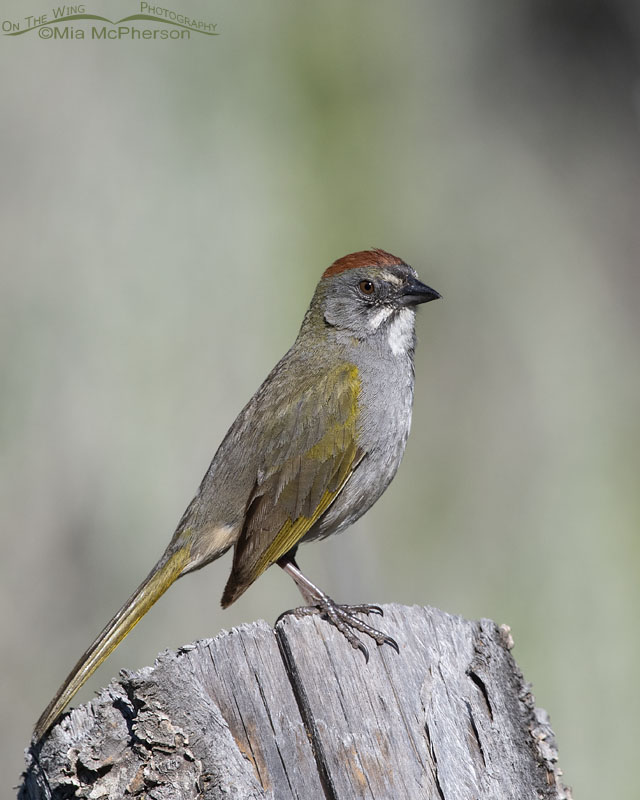
Side view of an adult male Green-tailed Towhee in the mountains
This is probably far more information on “He? She? It?” than anyone wanted to see this morning but after photographing the adult and immature Green-tailed Towhees yesterday I thought this was a great time to do this post. Maybe the info I have shared will help someone.
Life is good. Stay safe.
Mia
Click here to see more of my Green-tailed Towhee photos plus facts and information about this species.


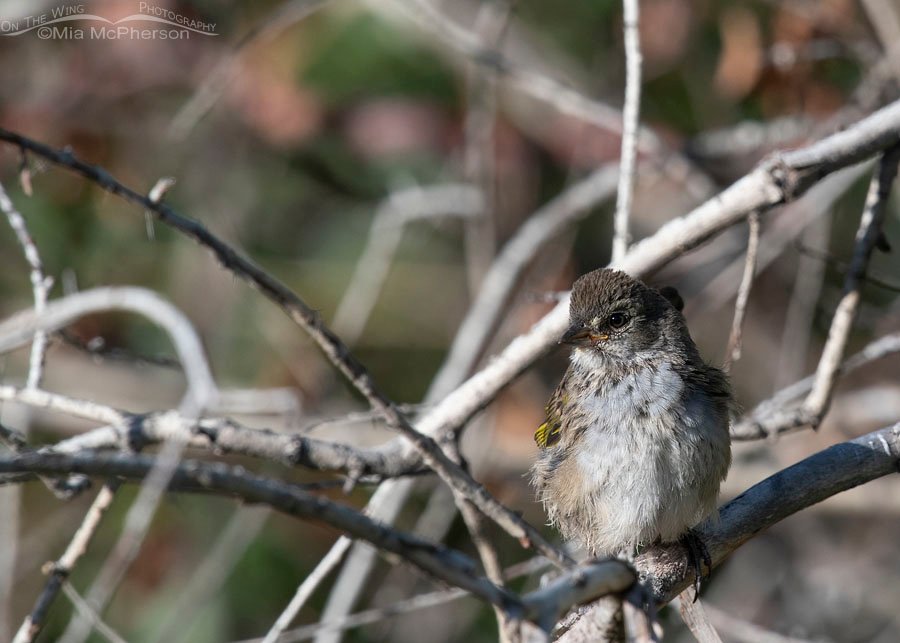
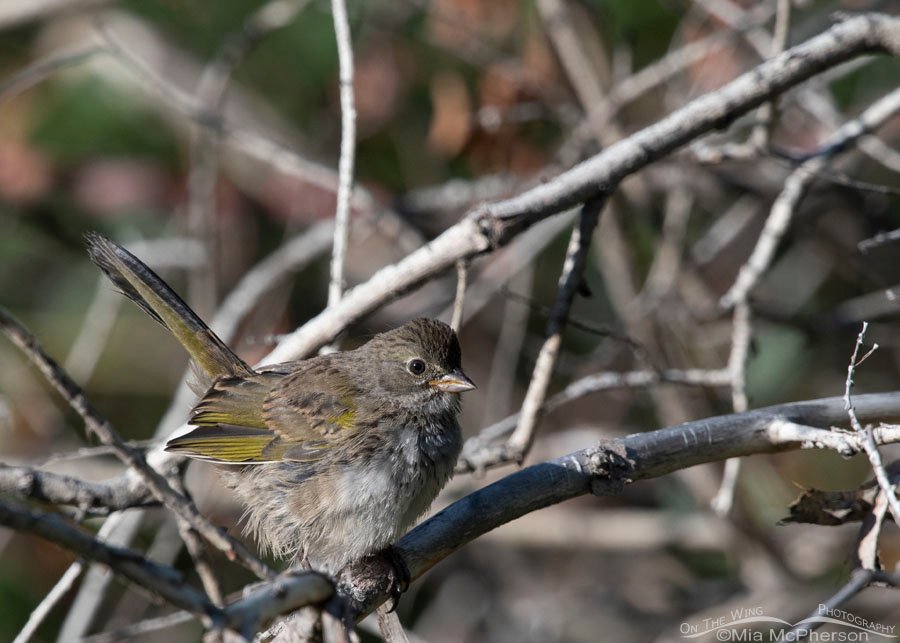
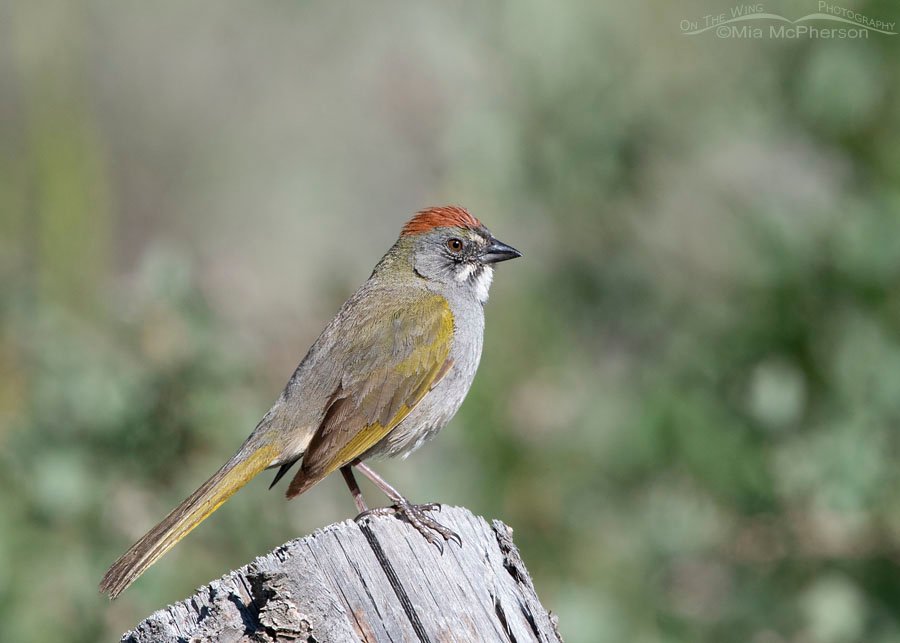
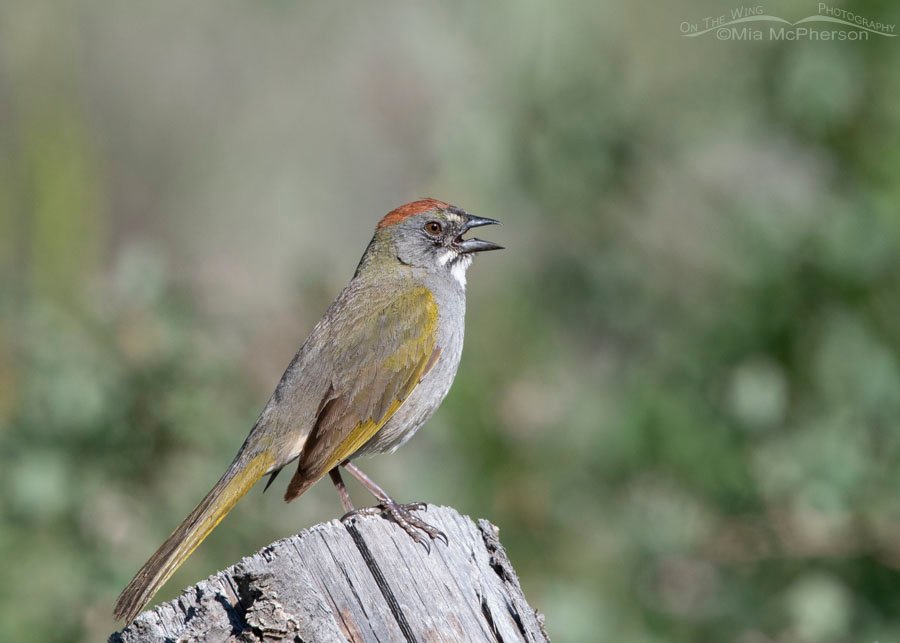
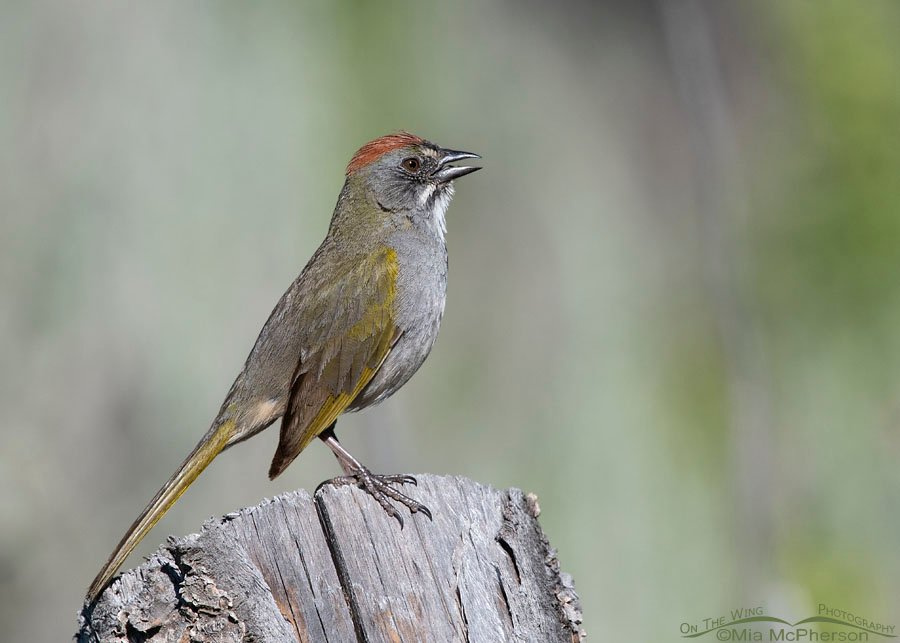
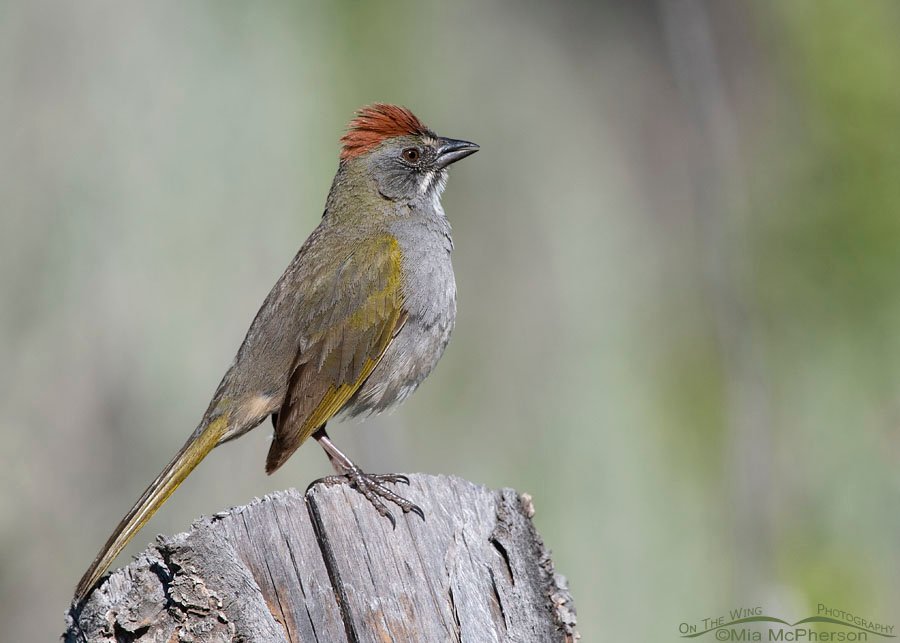
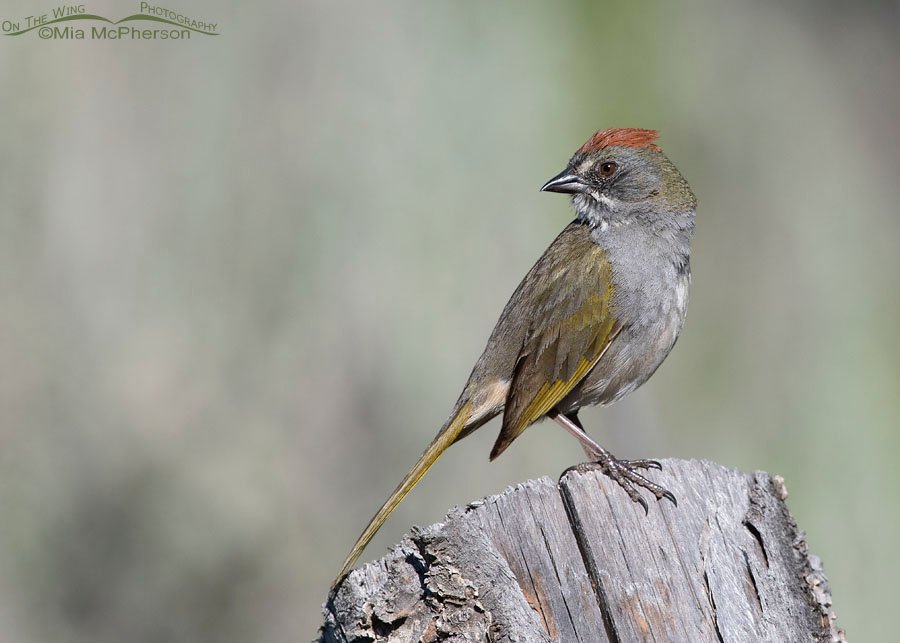
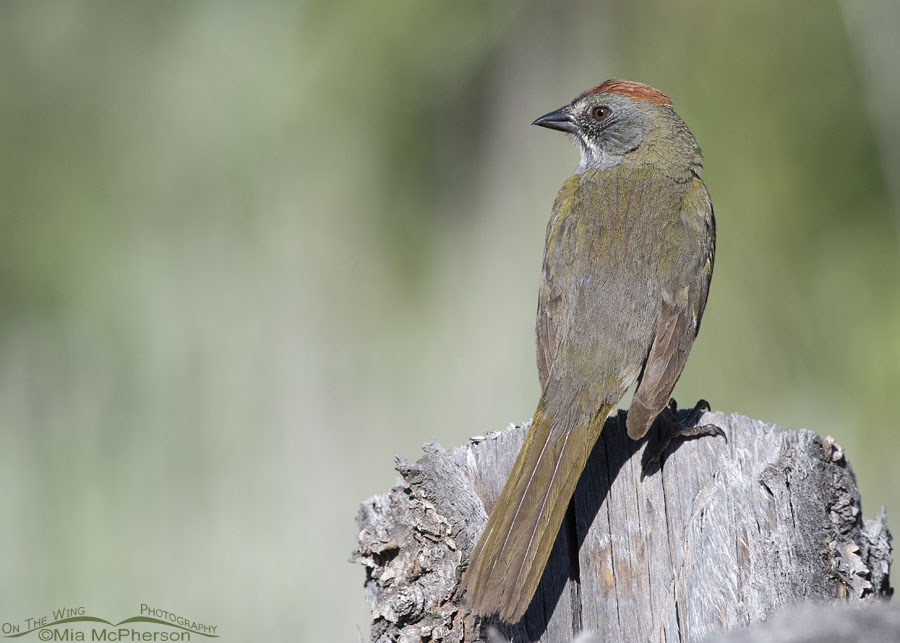
What a marvelous series of pics and your running narrative is perfect. What you bring to the table to help our understanding of the environment, of wildlife, and especially of birds…is invaluable. Thanks Mia.
Lovely birds — male, female, juveniles — and you’ve certainly given them their due in this post.
The towhees know – which is the important thing.
Labels are something I believe to be distinctly human. And sadly often wrong and/or hurtful.
A fabulous post Mia! Of course your photos, as always, are top notch! I really appreciate the information you have passed on because I often see folks use those labels incorrectly. If I don’t know for sure, I don’t use those labels because, well, that makes it easy!
Thanks for catching my typo Larry! That is what I get for rushing this morning. Also, thank you for your wonderful comment too.
Superb photographs and very nice tutorial!
Love the info, and flying us through your thought process!
Very informative with lovely photos too!
Wow! I learn so much from your posts every day. Thank you!
Absolutely beautiful! I love the montage you created. You are a gifted photographer, everyday
I look forward to your pictures everyday!